Time: 10:30AM – 4:00PM
Location: Eleven Mile Canyon
South Platte River 04/29/2024 Photo Album
I craved a double digit fish count day, as my high point in 2024 rested at eight. Yes, several outings yielded eight high quality fish, but more action offset by smaller fish was perfectly acceptable to this avid angler.
Monday, April 29 produced a weather forecast of high temperatures in the low seventies in Denver, so I assumed that this translated to acceptable temperatures in the mountains and foothills. I quickly reviewed my Weather Underground app for Lake George, and I was pleased to discover highs in the mid to upper fifties with cloudiness prevalent in the afternoon. Flows remained at 137 CFS, and this was encouraging after heavy rain on Saturday.
I made the drive and arrived at my chosen location by 10:00AM. I was disappointed to note that the dashboard thermometer registered 46 degrees, and a stiff breeze greeted me, as I stepped out of my Telluride. I swapped my high tech short-sleeved undershirt for a long sleeve Columbia thermal version, and then I layered up with fleece, light down and a rain shell. Once again I snugged on my billed hat with earflaps. Will winter-like weather ever depart from my fishing trips? For my casting tool I strung my Sage R8 four weight.
I decided to explore some new water, so I walked downstream along a path for .2 mile, and then I crossed and fished from the bank opposite the road. I began with a yellow size 8 fat Albert, a prince nymph and a beadhead hares ear nymph. Early in my venture I spotted two sporadic rises in a nice deep run along the roadside bank, but I was unable to create any interest in my nymphs in spite of imparting movement via lifts and swings. After fifteen minutes with no response to my flies, I swapped the hares ear for a sparkle wing RS2, but that move was a resounding non event. After forty-five minutes of fishing all the likely deep runs and moderate riffles with no action, I removed the prince nymph and replaced it with a 20 incher in an effort to generate deeper drifts along the bottom.
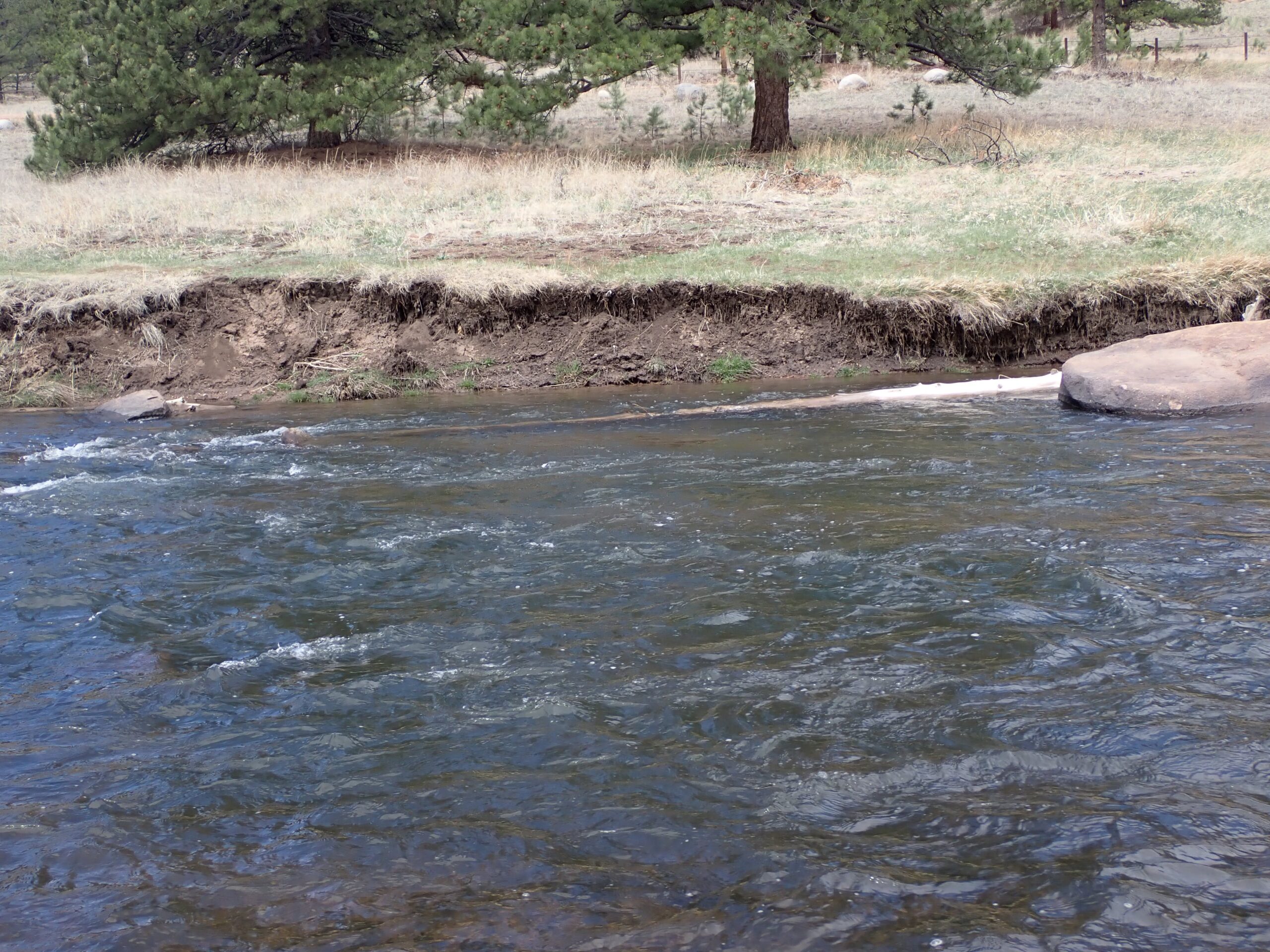 Home of the Wild Brown Next to the Log
Home of the Wild Brown Next to the Log
The move paid dividends, when I landed a very nice wild brown trout in a deep pocket along a fallen log, and the netted fish nabbed the 20 incher. Another fifteen minutes of probing resulted in another lull, and by 11:30AM I approached the parking lot and my car. A couple occupied the pool opposite the parking lot, so I used this as an excuse to warm my hands, and I sat on the tailgate in the sun and ate my lunch.
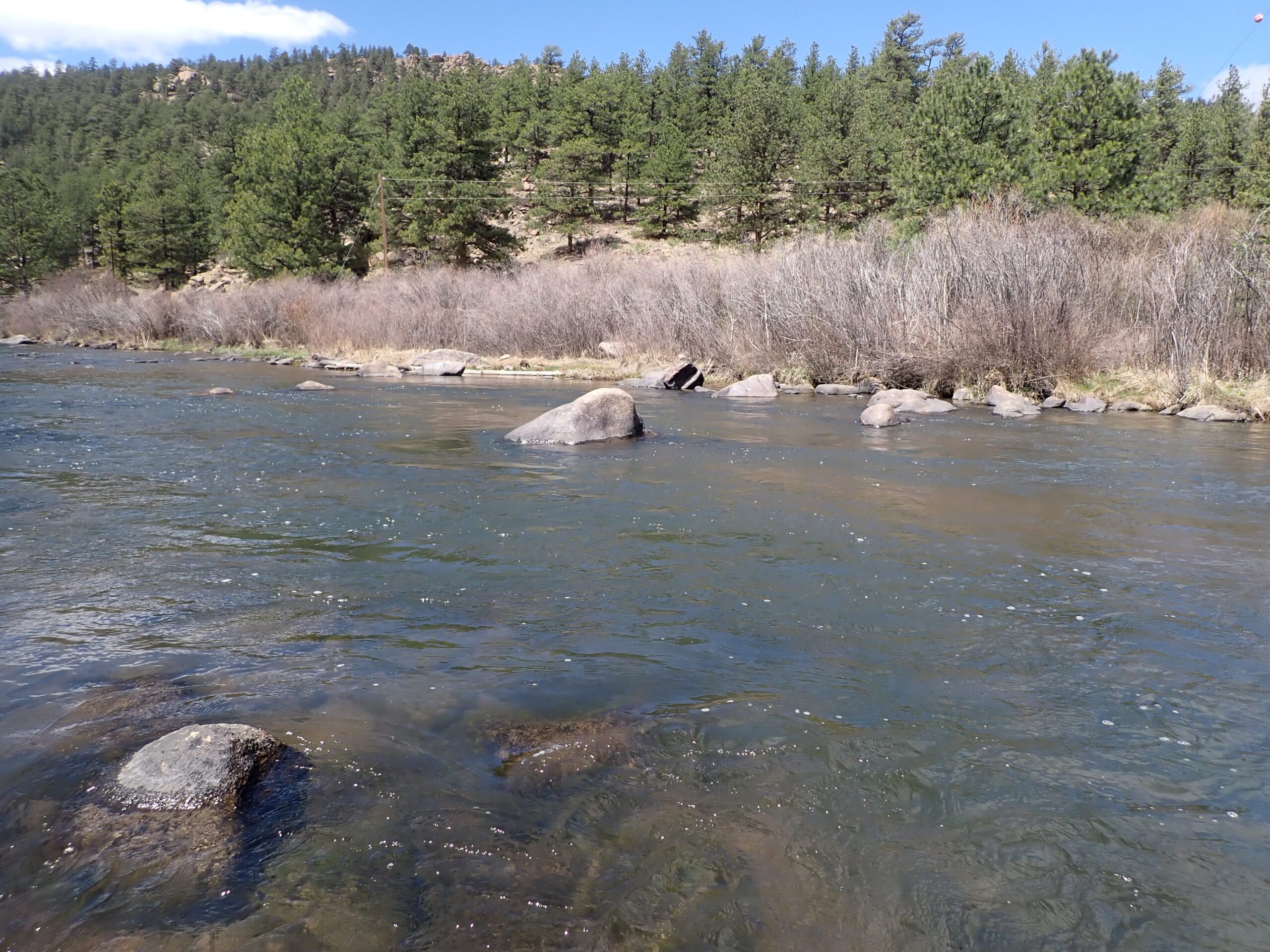 Type of Water Where I Was Swinging and Lifting
Type of Water Where I Was Swinging and Lifting
The air remained quite cold and windy, so I made no adjustments to my attire, and I returned to the river an acceptable distance above the fly fishing couple. Within a few minutes I hooked up temporarily with a brown trout, but it quickly evaded my efforts to bring it to the net, and I moved on and fished some very nice deep runs and pockets. I managed to land a couple rainbows that also favored the 20 incher, before I approached a series of long, deep and slow moving glide pools. At this point I was fishing the 20 incher along with a classic RS2, and I began to make casts across the river and allowed the flies to lift and swing at the end of the drift. This tactic worked, as several fish nabbed the 20 incher, and another pair grabbed the RS2, and the fish count mounted to a respectable seven.
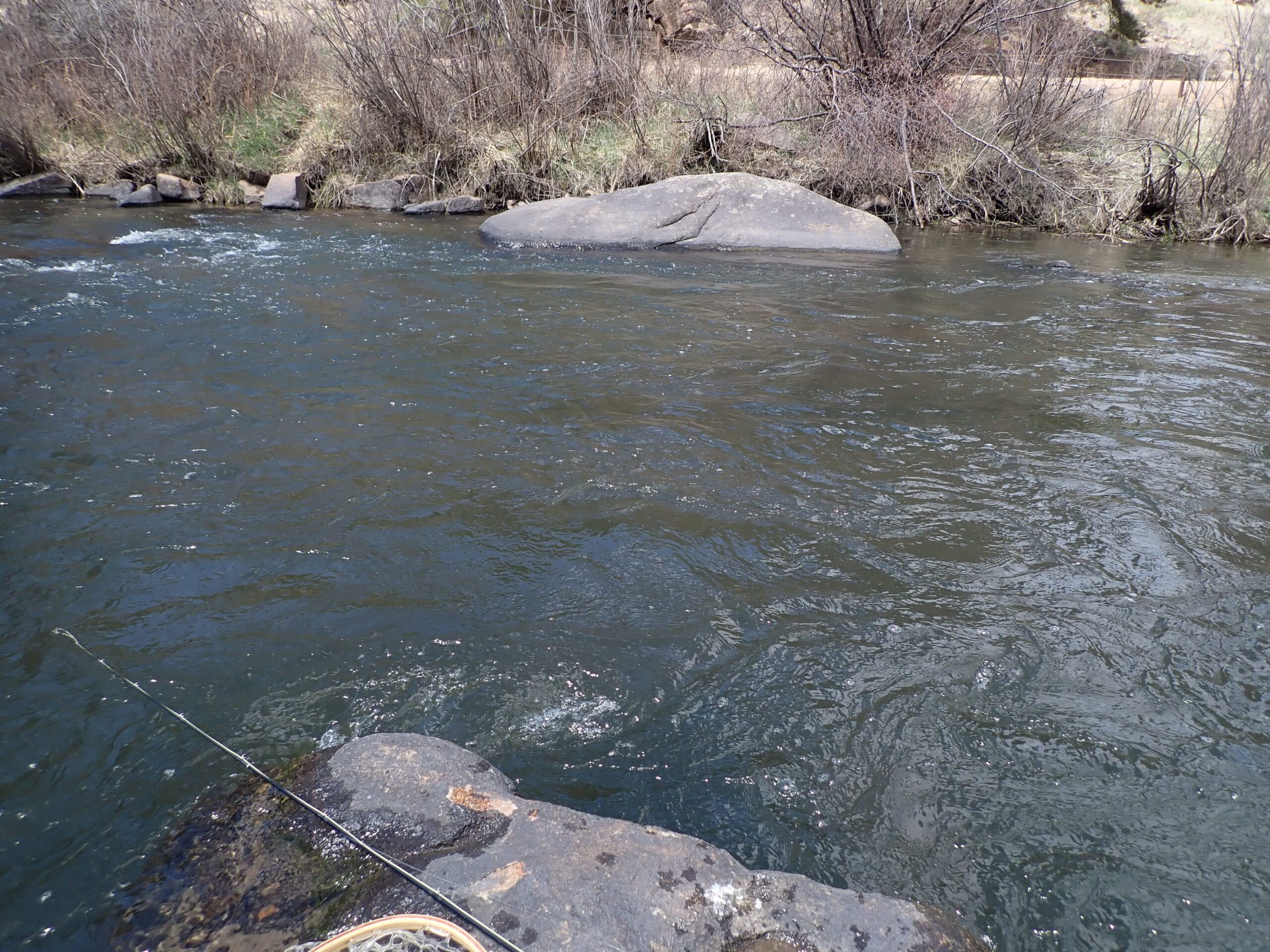 Area Where I First Noticed the Hatch
Area Where I First Noticed the Hatch
I glanced at my watch and noted that it was 1:30PM, and some large puffy clouds skidded across the sky and blocked the sun. Instantly the wind kicked up, and a flurry of rises commenced across the pool. I could not resist the allure of dry fly fishing, so I paused to cut off my dry/dropper configuration and replaced it with a double dry that featured a hippie stomper in front and trailed a soft hackle emerger. Ten casts among the risers convinced me that the soft hackle emerger was not the answer, so I swapped it for a CDC blue wing olive. This did the trick, and for the next twenty minutes I executed across and down reach casts in order to place the tiny dry ahead of the stomper, and this succeeded a number of times, as I boosted the fish count to ten. This was by no means easy pickings, but it worked often enough to satisfy my craving for dry fly action.
Suddenly the sun reappeared, and the wind subsided, and the fish stopped rising. The next section featured a myriad of fast water, deep runs and pockets; and the double dry did not seem well suited to prospecting without the benefit of visible fish, so I converted back to the dry/dropper. In this instance, however, I attached an emerald caddis pupa as the end fly. The change in strategy failed, and after covering a forty yard section, I arrived at the long bend pool. I paused to observe, and this break once again coincided with dense cloud cover, and the weather change resulted in the resumption of the baetis hatch, as a cluster of trout began to feed. Three or four lined up along the main current seam, and another pod sipped olives, where the main current fanned into moderate riffles.
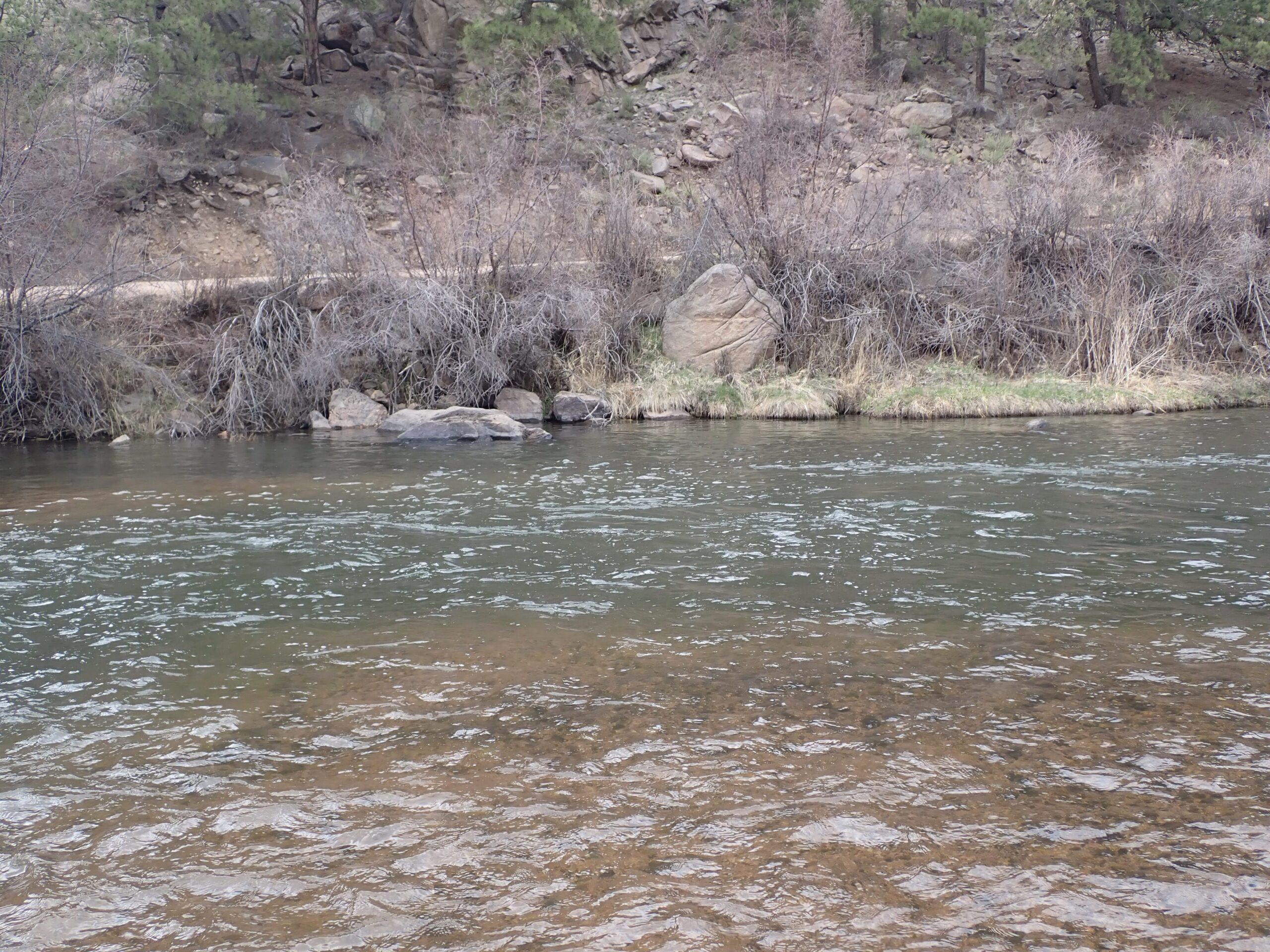 Most of My Dry Fly Action Was Here
Most of My Dry Fly Action Was Here
Once again I made the conversion to a double dry arrangement, and for the remainder of the afternoon I cast my flies across and allowed them to drift downstream to the greedily feeding trout. I had a blast, as I boosted the fish count from ten to eighteen, I called it quits at 4PM. I cycled through several CDC blue wing olives, as I sought flies with fluffed out dry wings, and after several landed fish the CDC became thin and matted. Eight fish in the net sounds impressive, but this transpired over two hours of fishing and quite a few waves of hatches, heavy cloud cover and increased wind velocity. The CDC puff worked often enough to keep me in the game, but it was also ignored on many drifts. I suspect that there were so many naturals on the water that timing played a large role in determining whether a trout would sip my fly or instead opt for a fluttering natural.
At four o’clock the sun reappeared, and the hatch ended, and I surveyed the western sky. It was obvious that a huge blue sky gap was in progress, and I was unwilling to wait for another wave of low light and emerging mayflies. I clipped my flies to my rod guide and returned to the car satisfied with the knowledge that I reached double digits for the first time in 2024, and I enjoyed an extended BWO hatch and capitalized on it with some steady success.
Eighteen fish in five hours is a decent but not outstanding catch rate, and the largest fish was thirteen inches. Some of the rainbows appeared to be stockers, but several possessed the vivid markings of carryovers. The brown trout were clearly wild, and the two thirteen inchers were the best fish of the day. I look forward to more adventures on the South Platte River before the levels rise as a concession to snow melt.
Fish Landed: 18
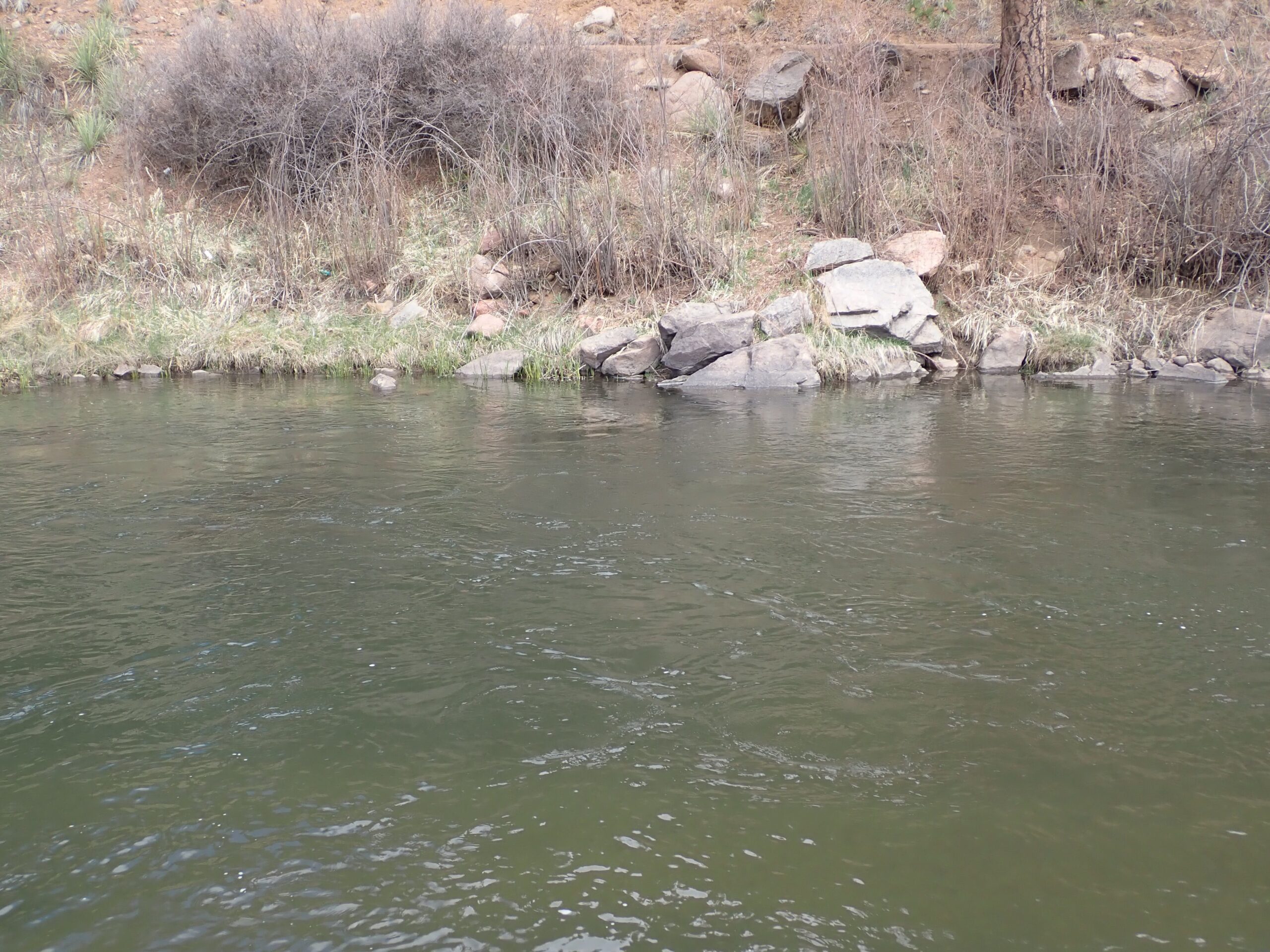 Scene of a Couple Rises
Scene of a Couple Rises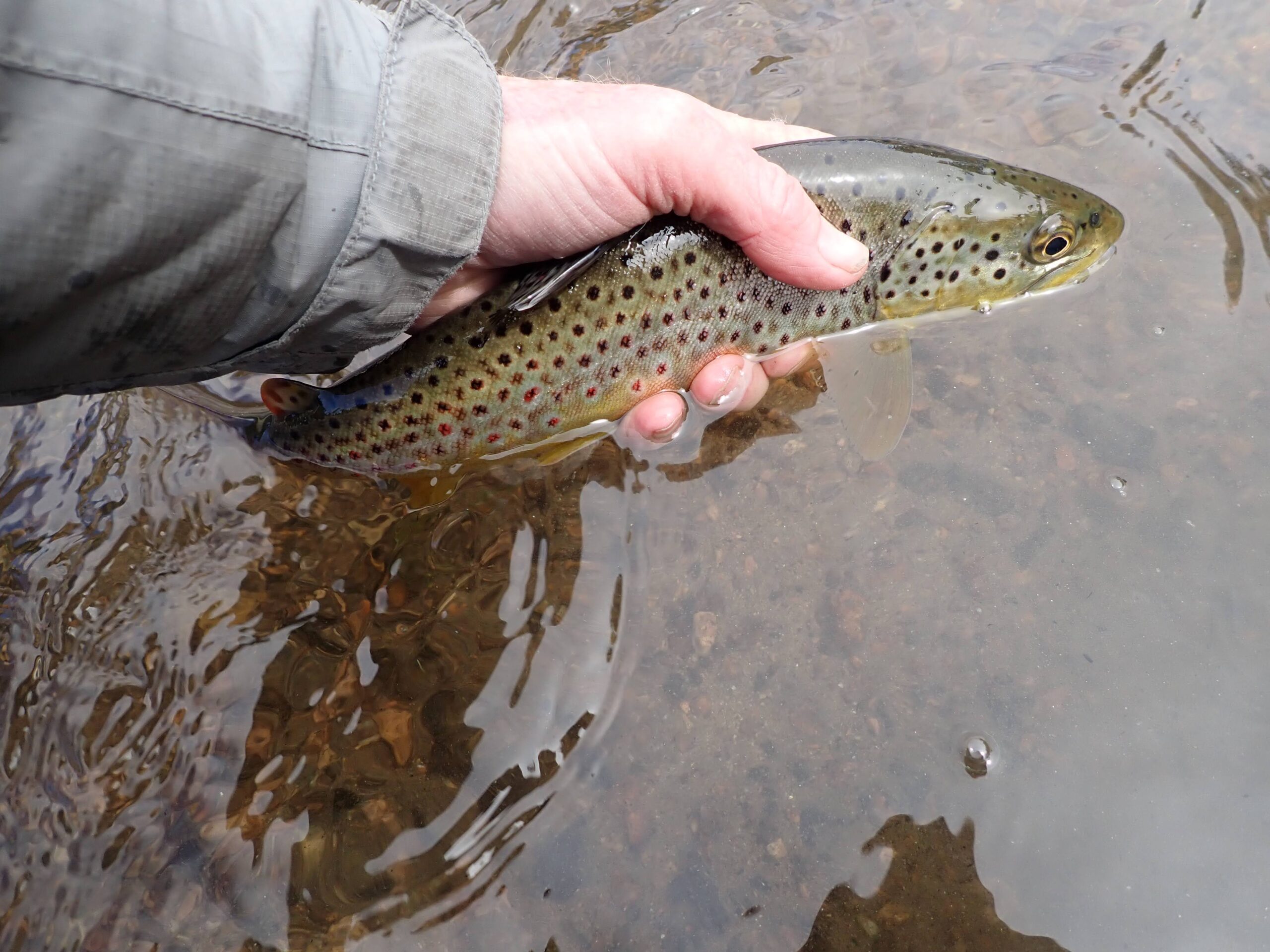 First Trout Was a Brown
First Trout Was a Brown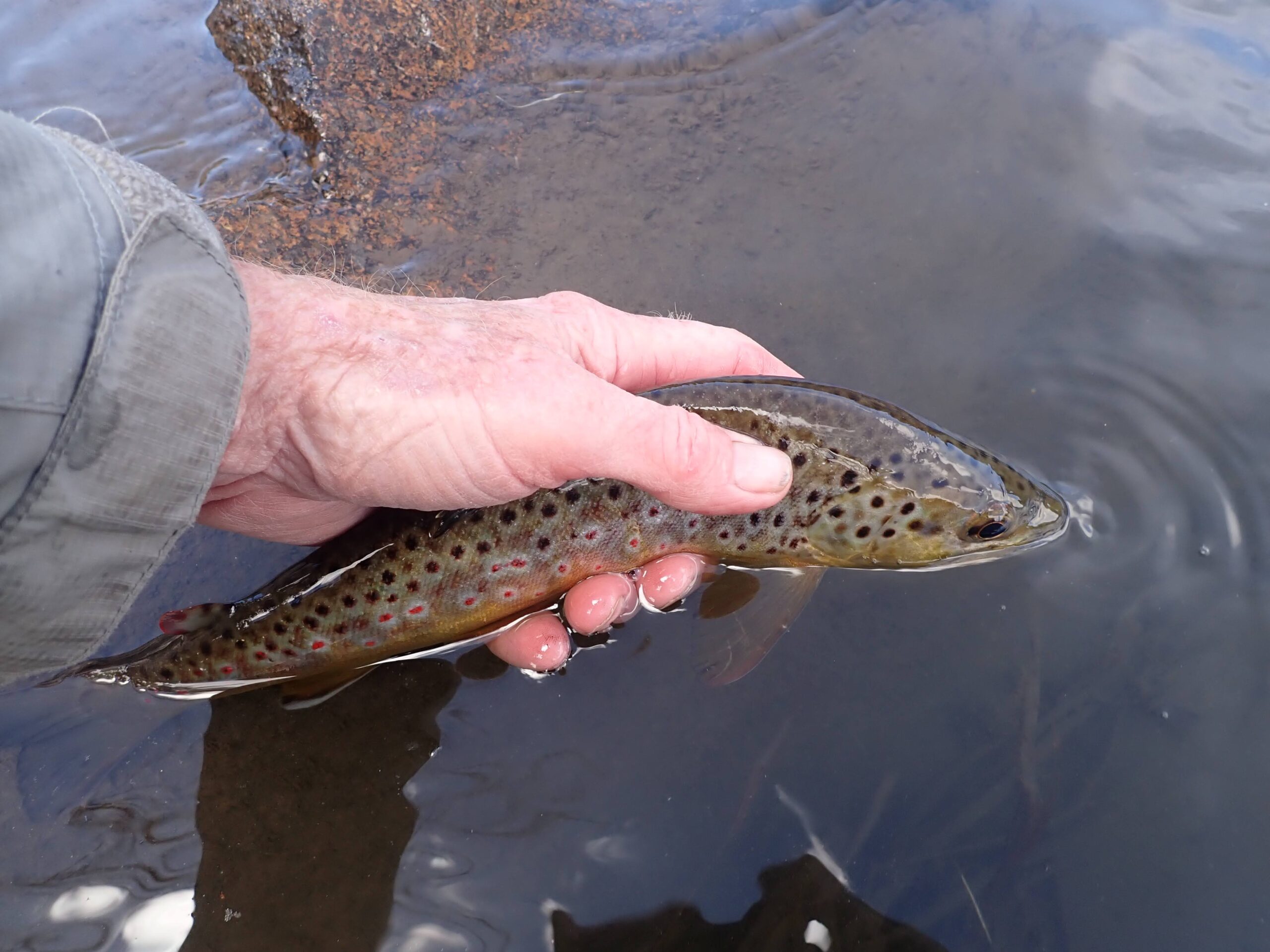 Took 20 Incher on the Swing
Took 20 Incher on the Swing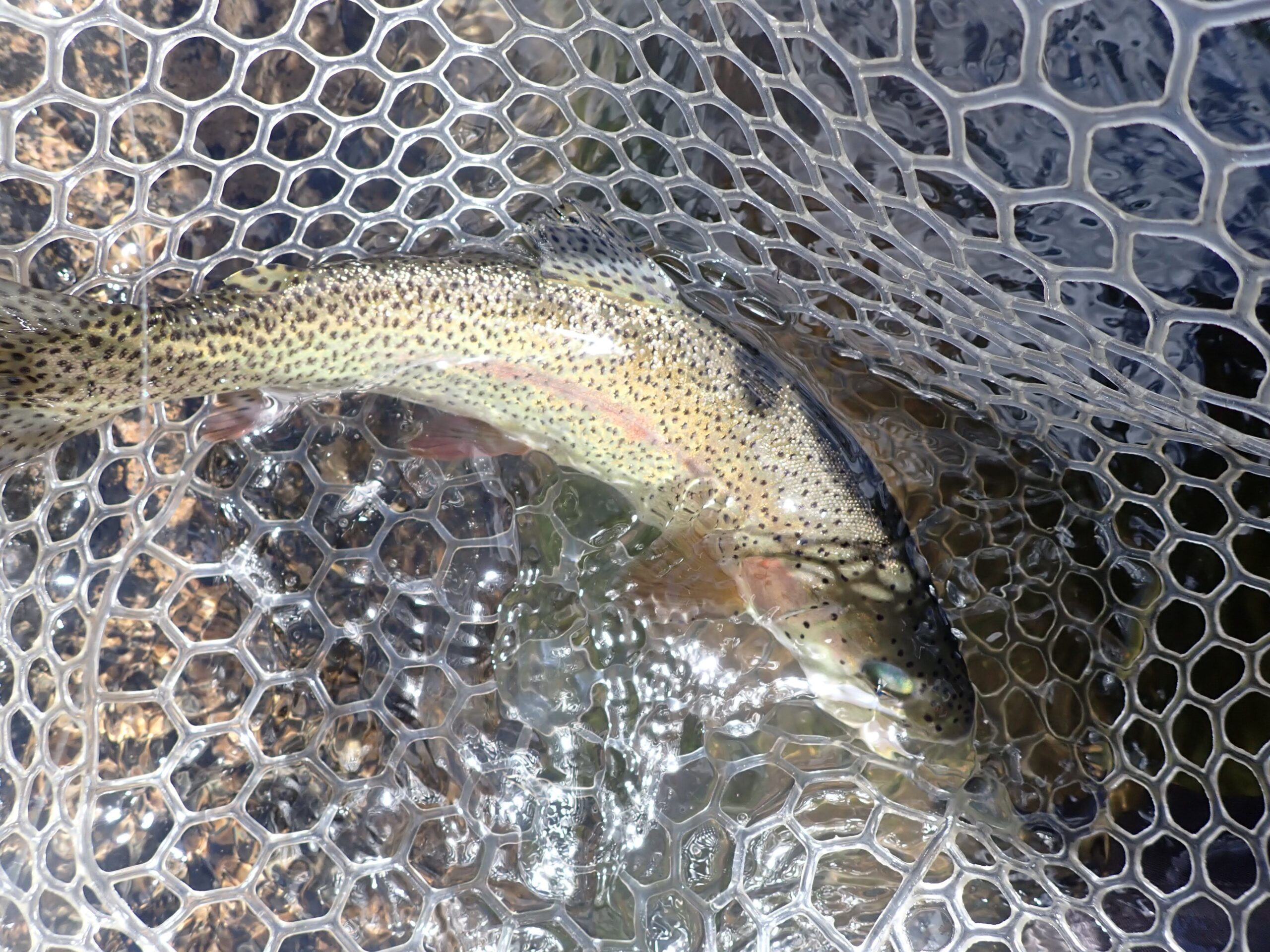 An Early Dry Fly Eater
An Early Dry Fly Eater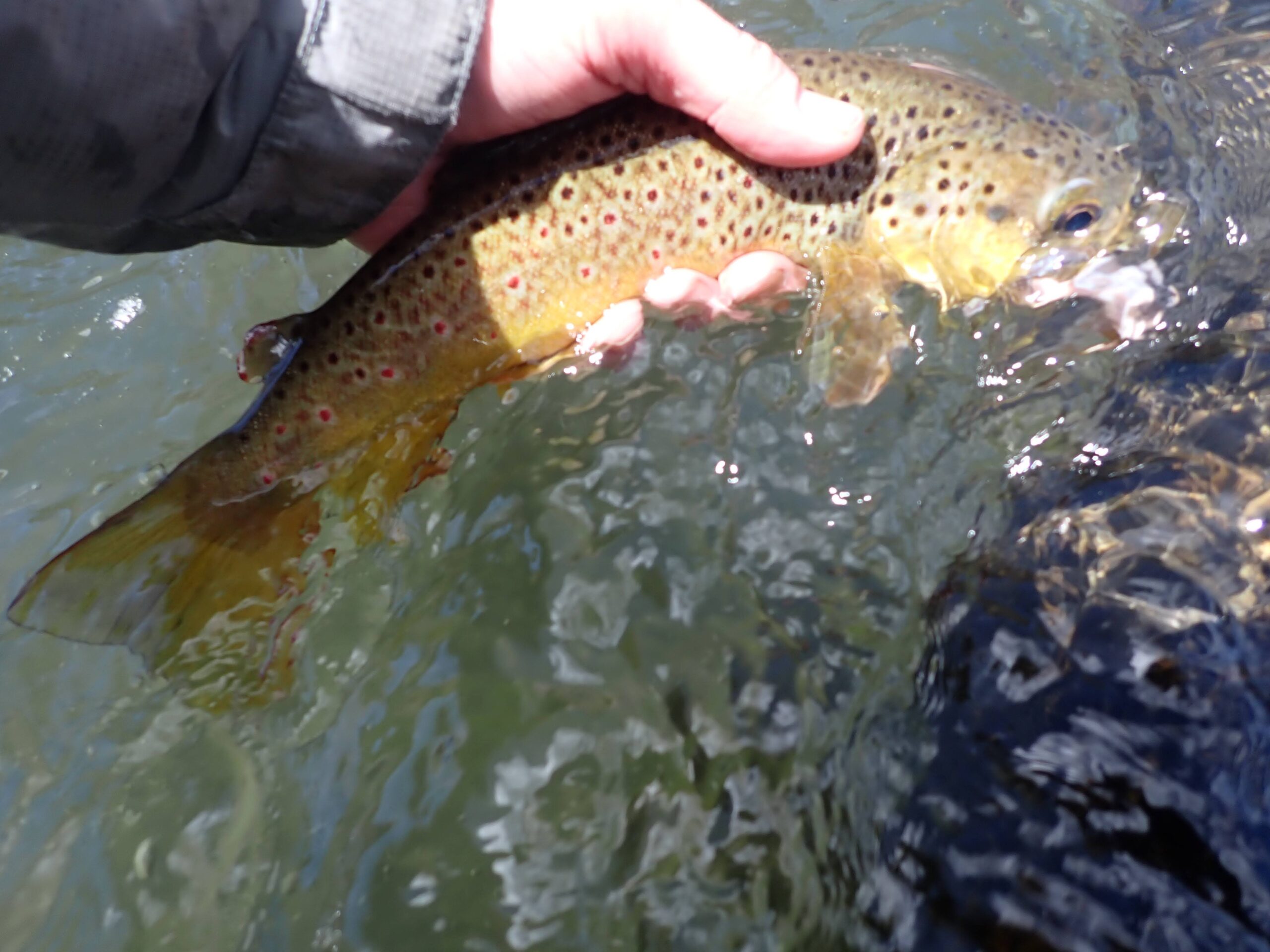 A Fine Wild Brown Trout
A Fine Wild Brown Trout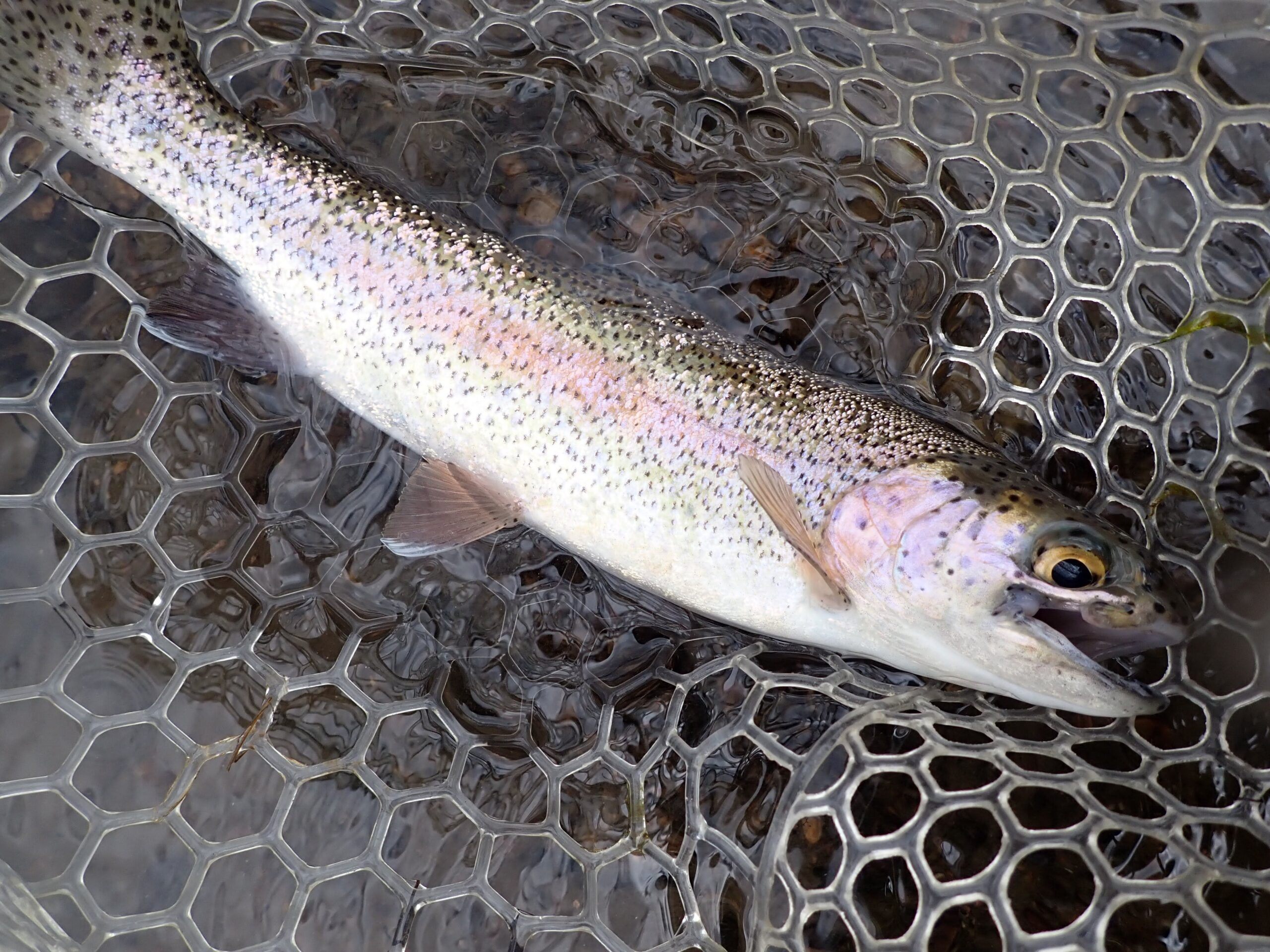 Hatch Feeder
Hatch Feeder